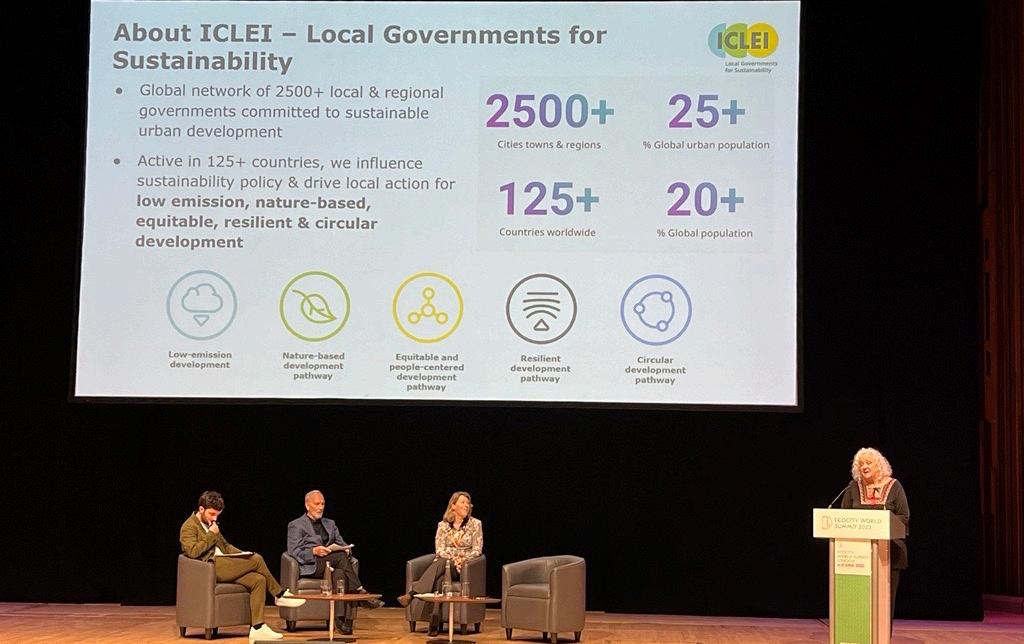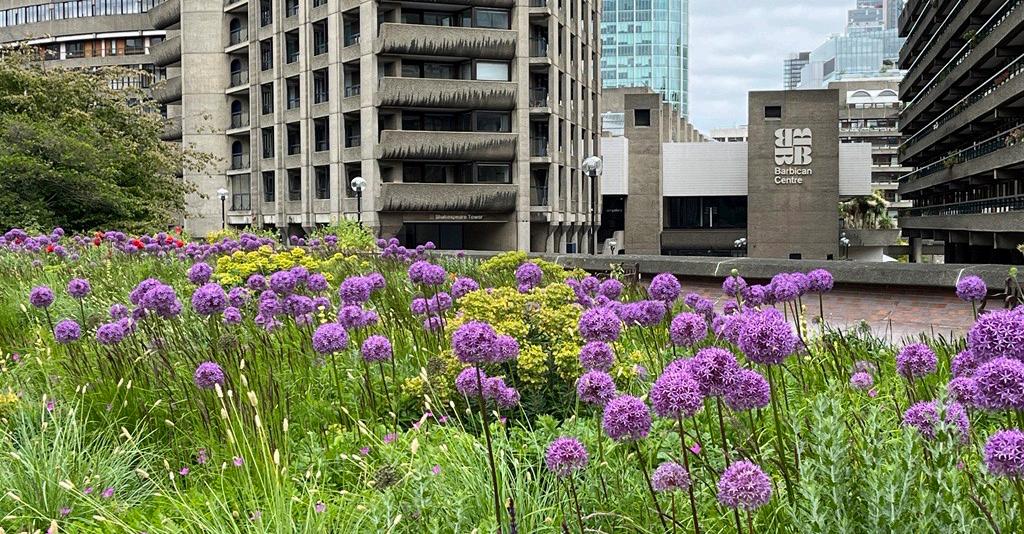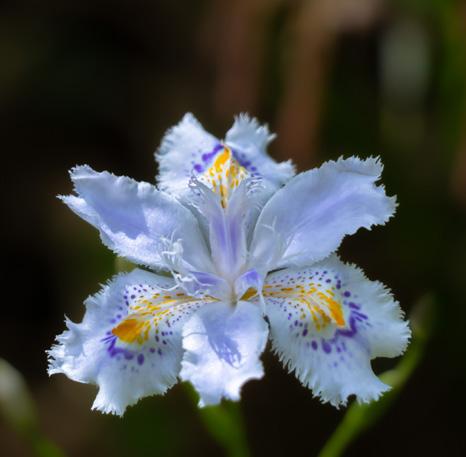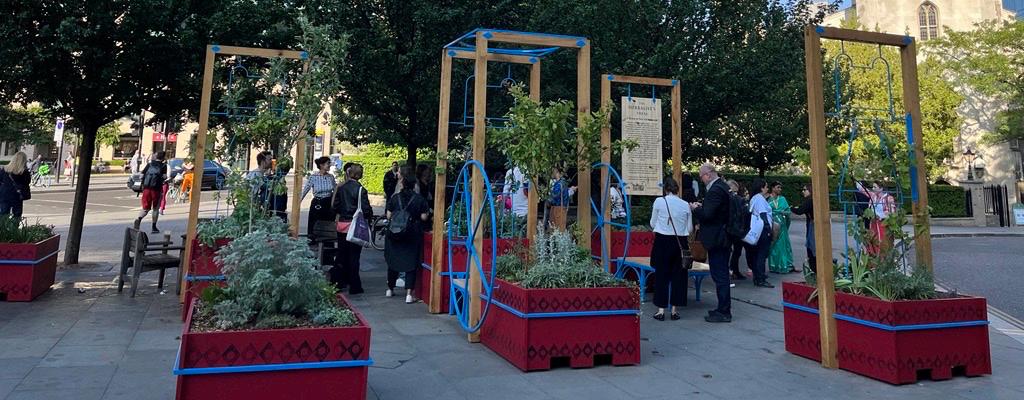
3 minute read
A GLOBAL GREEN CITY COMMUNITY
First held in 1990, the Ecocity World Summit is the pioneer and longest-running global conference on ecology and cities. Every two years, it brings together urban stakeholders from across the globe to focus on key actions cities and citizens can take to rebuild our human habitat in balance with living systems.
With the theme of Connecting Communities, EcoCity World Summit was hosted in 2023 by London. The 3-day conference was attended by a global community of experts, innovators, and urban leaders. Through keynote sessions, workshops, panel discussions, and informal networking, Ecocity World Summit 2023 explored how collaboration, participation, the democratisation of design and transdisciplinary approaches can create better cities and communities.
Advertisement
AIPH was accepted to present an E- poster at the summit, and Dr Audrey Timm, Technical Advisor to AIPH, attended the 3-day event. The AIPH e-poster demonstrated the value of the AIPH World Green City Awards in showcasing cities that put plants and nature at the heart of their future.
Over the three days, sessions covered four main topics: Biodiversity, Regenerative Design, New Lifestyles, and Healthy Ecosystems. We started with a keynote speaker each day, followed by parallel sessions of short presentations, panel discussions, and interactive workshops. In a closing session, Kobie Brand, Deputy Secretary General, ICLEI and Regional Director, ICLEI Africa, spoke about the urgent and collective action needed on a scale never seen before, stating that making peace with nature is the defining task of the 21st century.
The conference also offered tours within walking distance of the venue, the magnificent brutalist architecture of the Barbican Centre. The tours introduced participants to some of the key projects shaping a more ecological future for London. Square Mile Farms is an urban agriculture initiative that provides small modular, vertical growing units to communities and corporations. The units use an LED lighting system and hydroponic nutrition to grow fresh greens for local consumption. The initiative serves to create a culture of community connection and awareness of nutrition and food security and brings the city greening indoors into offices and workplaces.
The Fleet Street Quarter adopted a Business Improvement District (BID) proposal that brings to reality the vision to develop the district as a desirable city space for business, culture and leisure while retaining its special character as the historic centre of the printing industry. Increasing greening and air quality improvements were priority environmental interventions in developing the BID proposal. “The Herbalist’s Press” is a pop-up park inspired by the 16th-century herbalist John Gerard, who authored and printed the UK’s first Herbal in 1587 in the Fleet Street Quarter. The creative moveable design, with plants in the raised planter beds being those that were known to have grown in Gerard’s garden, brings a playful and immersive splash of nature into the public realm. The Beech gardens in the Barbican Estate are at the centre of a housing estate built mostly in the 1970s. The garden is a podium landscape consisting of constructed beds and water features, providing a residential green space away from city traffic. Originally planted with lawns and shrubs, the garden underwent a magnificent makeover in 2013 and now showcases the dynamic, creative work of Nigel Dunnett. Plant selection and placement create continuous and successive waves of colour and texture, responding to different microclimates around the site, giving the design an ecosystem-based resilience.
The summit concluded with the announcement that the City of Durban (eThekwini Municipality) in South Africa will host the EcoCity World Summit 2025.

IRIS JAPONICA (AKA ‘FRINGED IRIS’)

Martin Deasy is a tutor on the RHS Mhort. He also runs his own landscape design business.

“With a few exceptions, the forms of Iris most familiar in European contexts require open conditions and full sun to thrive, making them difficult to incorporate into urban plantings that rely on a closed vegetation cover to achieve weed suppression and minimise maintenance. However, there are a number of useful Iris species that prosper in more crowded conditions and which offer considerable landscape potential yet are currently little used.
One such plant is the low-growing East Asian Iris japonica, native to Japan and China, where it occurs at woodland edges and in open grassy meadows. In spring, distinctive sprays of fringed pale lilac flowers with yellow crests float on branched stems above glossy mid-green foliage in a manner reminiscent of orchids, earning it the nickname 'butterfly flower'
The sword-shaped leaves emerge in fans from short rhizomes, from which slenderer creeping rhizomes extend to colonise adjacent ground, eventually forming an effective evergreen ground cover. It favours humus-rich soils, but like most Iris, it is drought tolerant once established; poor winter drainage may cause roots to rot.
Adapted to partial shade, I. japonica lends itself well to sheltered urban pocket plantings in the shade of buildings or beneath the canopy of street trees, combining effectively with ferns and other loose ground covers to provide striking early-season interest.
But as its varied natural habitats suggest, it is also potentially valuable in extensively managed plantings in more open settings: the American designer and nurseryman John Greenlee is a proponent of its use in designed meadows, where its spring flowers are held advantageously above the growing grasses. Hardy to approx. -15°C, the species is highly variable over its wide geographic range, and some recent selections— notably the striking 'Eco Easter' from the US breeder Don Jacobs—are reported to be hardier.”










